When troubleshooting kombucha problems it’s important to know what healthy kombucha is supposed to be like. Using your senses and observation you’ll be able to know that your kombucha is safe and healthy.
Kombucha is a beneficial tonic beverage that has many health benefits. Rich in natural detoxifiers, Kombucha fights free-radical damage in your body, energizes you, and gives you many probiotics to help with digestion, brain health, and fighting the bad bacteria and viruses in your environment. Plus you can make Kombucha at home using just tea and sugar so that these awesome health benefits come to you for just pennies a glass. See my directions for making Kombucha at home here.
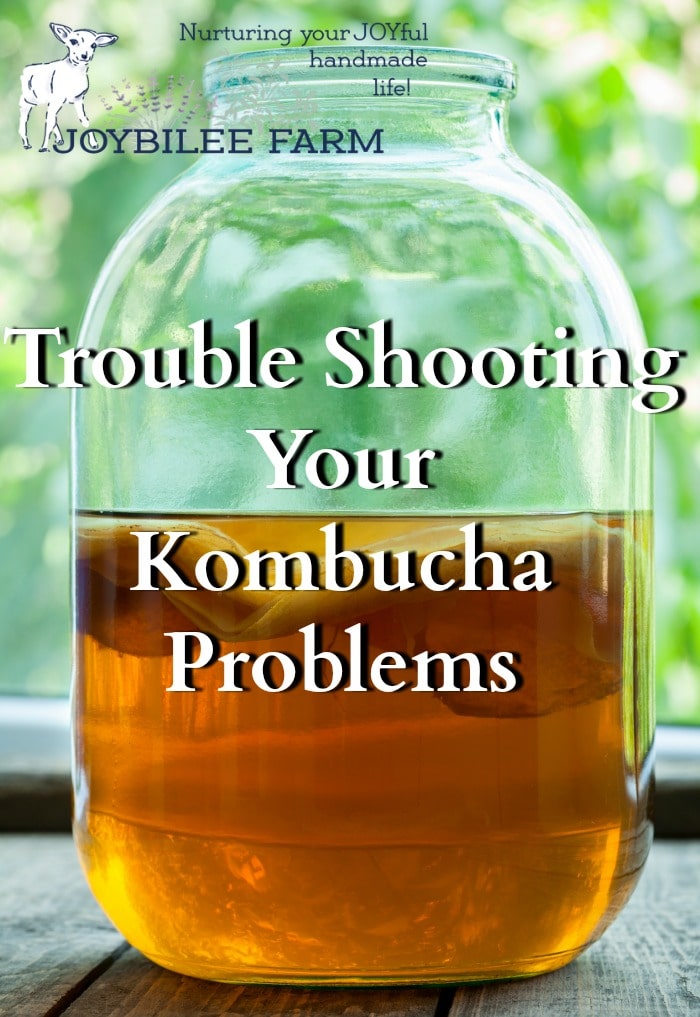
Here’s a quick chart for proportions of tea/sugar and starter for different size batches of Kombucha:
|
Container Size |
Amount of Tea | Amount of Sugar | Amount of water | Cups of Starter |
| 1 quart/litre | 1 ½ tsp. loose tea /2 tea bags | ¼ cup | 3 ½ cups | ½ cup |
| 2 quarts/litre | 1 T loose or 5 bags | ½ cup | 7 cups | 1 cup |
| 1 gallon | 2 T loose or 8 bags | 1 cup | 13 1/2 cups | 2 cups |
Second Fermentation method:
Many people enjoy fizzy kombucha. This fizziness is obtained by making a second ferment, where the carbon dioxide is prevented from escaping. When making the second fermentation you can add 1 cup of fruit or fruit juice for every 7 cups of finished Kombucha, which is basically replacing the starter that you remove with fruit juice. The second ferment is bottled in individual serving sizes. These second fermentation bottles should be capped tightly to allow the fizz to build up. See more about making fizzy kombucha here.
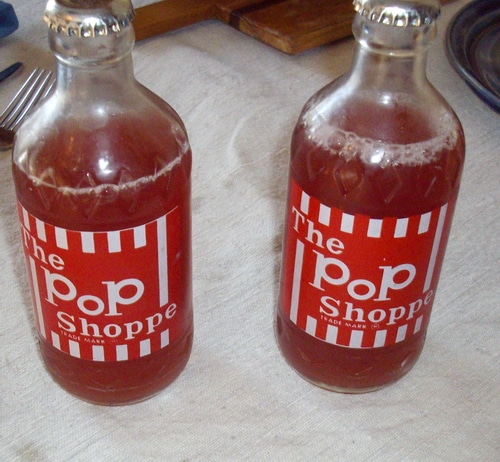
Conditions necessary for perfect Kombucha:
Kombucha is a fermented drink and is very easy to make in the right environment.
To make kombucha you need:
- clean jars and utensils,
- non-chlorinated water
- strong tea
- real sugar
- 70F temperature
- 4 to 7 days
If you give kombucha these conditions, your kombucha growing career will be free of problems. However, if any of these elements are missing, you may have a few issues with your Kombucha brewing. Some problems can be fixed, but other kombucha problems are irreparable.
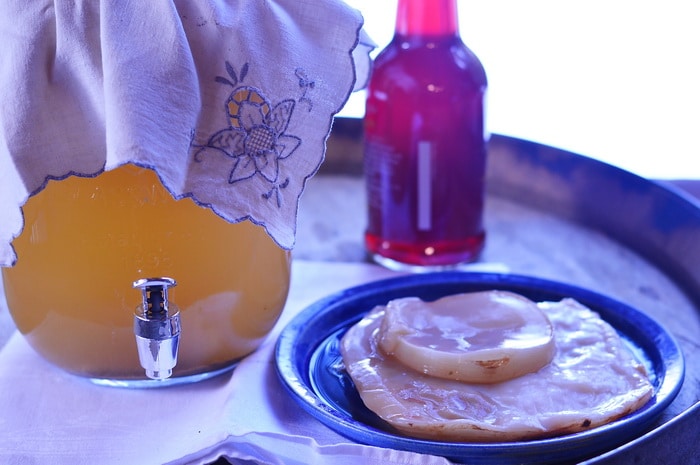
Kombucha troubleshooting guide
When making Kombucha you are dealing with a live, acidic, probiotic culture. As long as the culture can colonize the solution of tea and sugar quickly, it will successfully compete without any bad bacteria, like molds, in the environment. However, if the colonization is too slow, bad bacteria can take hold of your Kombucha solution. This can be a serious problem that makes your kombucha unsafe for human consumption.
But not all kombucha troubles are serious. Some are just inconvenient. In this kombucha troubleshooting guide, I’ll take you step-by-step through the diagnosis of typical kombucha problems so that you know if your kombucha is safe to drink, and also what you can do next time to avoid kombucha troubles.
Here are 6 things that can go wrong when you are brewing kombucha and some suggestions of how to avoid kombucha trouble in your next batch.
1. My Kombucha is too acidic and tastes like vinegar
You left your Kombucha too long to ferment. Properly fermented Kombucha should be between a pH of 4 and a pH of 2. If it gets lower than 2, it will taste like vinegar. A lot of bottled Kombucha has this vinegary quality, as raw Kombucha continues to ferment even after bottling, even at refrigerator temperatures. The sooner it is drunk after it has reached its ideal pH the better it will taste.
You can use Kombucha that tastes vinegary for the starter on your next batch of Kombucha. You can also use it in place of vinegar in salad dressings, marinades, and sauces. You can add it to bone broth to help extract the vital minerals from bones and cartilage, as well. You can use vinegary kombucha in a recipe that calls for vinegar or lemon juice, like a jerky recipe. You can also use acidic kombucha in all-purpose cleaning solution recipes, in place of vinegar.
Vinegary Kombucha is safe to consume, it just tastes a bit sourer than is pleasant to the taste.
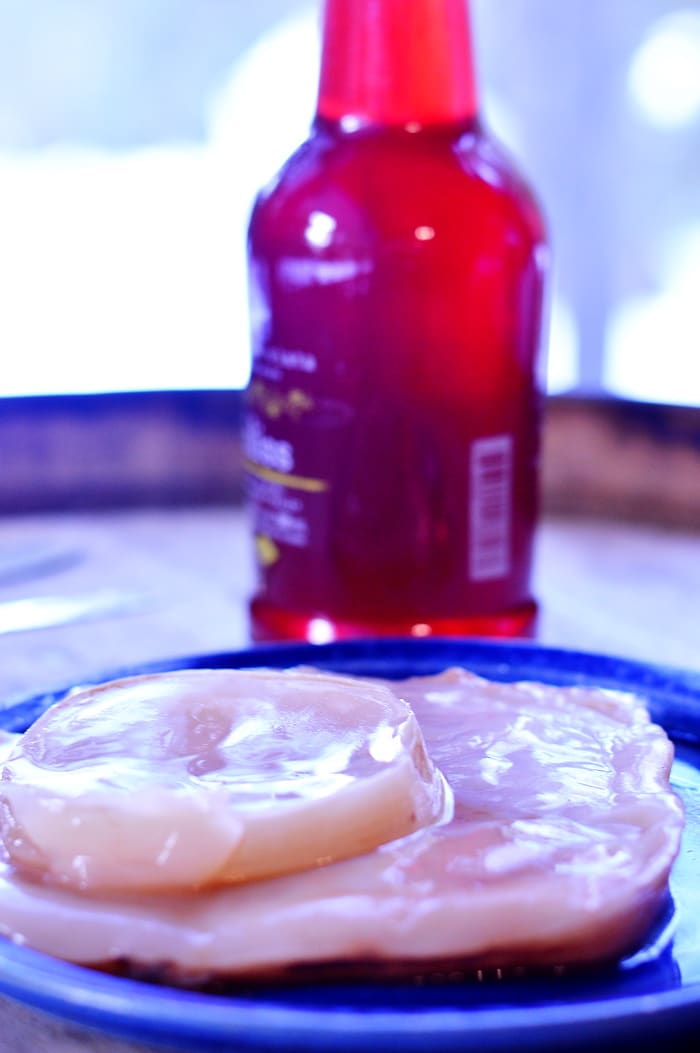
2. My Kombucha mushroom is brown on top but doesn’t have any mold.
This is normal. The Kombucha mushroom will grow darker and darker as it thickens, with each new batch of Kombucha. It will also grow baby scobies (mushrooms) on top of the original scoby. These can be pulled apart, gently, to start a new batch of Kombucha, or to give to a friend. You might even use a layer of your kombucha scoby to make a DIY kombucha starter kit for a gift.
3. My Kombucha has hairy black, orange, green, or red mold on top of the scoby.
While most kombucha is strong enough to fight off the invasion of bad bacteria, sometimes things can go wrong. If you find a mold of any color on top of your kombucha scoby or in the top or sides of your fermenting jar, you’ll need to take drastic measures. Do not consume any kombucha coming from this batch. Do not use the scoby to make a new batch.
Most likely the problem is that your Kombucha got too hot or too cold during the first ferment. This can happen if the tea was still warm when it was added to your fermentation jar. In a wood-heated house, nighttime temperatures can drop too low to keep the probiotic bacteria active in the fermentation jar.
Another possible cause is contaminated utensils or fermentation vessels. If you are fermenting sourdough bread, cheese, or other fermented food near your kombucha there can be cross-contamination between the kombucha and the other ferments.
Throw out the entire batch including the scoby. Get a fresh scoby from a friend and start again, with well-boiled water. Sanitize all containers and utensils before making your next batch of kombucha. This will help prevent troubleshooting kombucha with this problem again.
Move your fermenting Kombucha to a clean cupboard away from other sources of contamination. Cover with a clean linen handkerchief or tea towel to keep out dust. Do not use cheesecloth as the weave is not tight enough to exclude pests.
4. My Kombucha hasn’t changed in 5 days. It is a pH of 7 and the scoby is at the bottom of the jar.
Your tea was too hot when you put your scoby and starter into the jar and it killed the Kombucha colony. For troubleshooting kombucha with this problem, start again with a new scoby and new starter Kombucha.
5. My Kombucha smells or tastes bad – not vinegary, just bad.
Don’t drink it. Throw it out. Start again with a fresh scoby and fresh starter. Don’t risk drinking anything that might have bad bacteria in it. Kombucha should taste slightly acidic, with a fresh, sparkling taste – a bit like apple cider vinegar in honey. There should be no putrid smell or taste.
6. My scoby is black, not moldy just black.
Your scoby has died. Throw it out and any batches that were made with it, and obtain a fresh scoby. Your scoby may be old – they have a lifespan. You may have started the batch with tea that was too hot.
This is what a healthy kombucha scoby looks like:
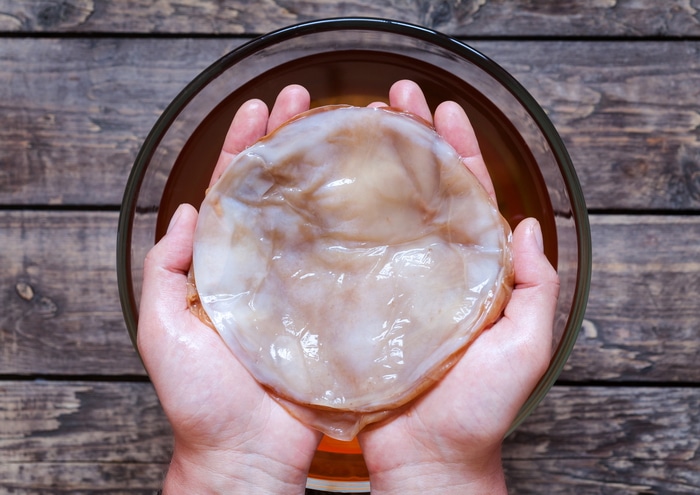
Err on the side of caution:
These tips are suggestions for getting the most from your batches of Kombucha. Always use your own common sense when making fermented foods in your own kitchen. Never risk your own or your family’s health by consuming something that you believe has gone “off”. Err on the side of caution.
Because of the acidic nature of Kombucha, it is very rare for anything to go wrong with properly made batches of Kombucha. If you are careful to clean and rinse your utensils and jars, use an acidic starter – either a previous Kombucha batch of vinegar and a clean and active scoby, you will have many, many years of happy Kombucha making and consuming.
Your active kombucha culture should give you Kombucha of the correct pH of 2.5 to 4 within 5 to 7 days. You should have baby scobies forming on the top of the jar or the top of the mature scoby. These can be separated from the mother culture and used to ferment fresh batches of Kombucha.

Kombucha Tip
After you’ve made kombucha for several months your kombucha scoby will thicken with layers of the mother scoby.
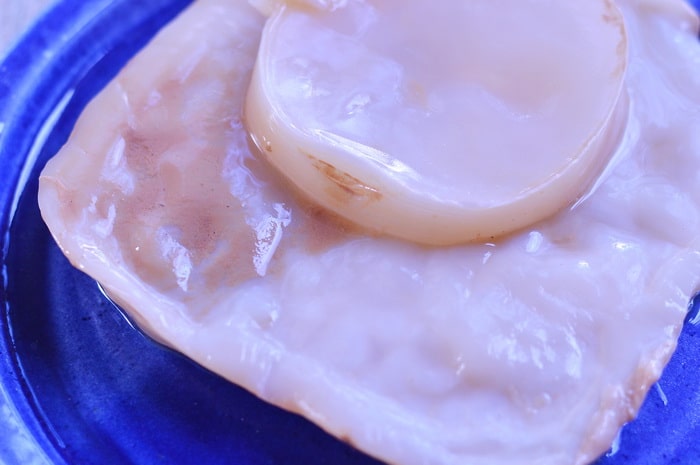
These can be separated from the mother scoby by peeling off the layers. Save these baby scobies in a “kombucha hotel”. Cover the scobies with that vinegary kombucha and cover with a normal jar lid. You can leave them at room temperature on the kitchen counter or in a cupboard or pantry. This way you’ll always have healthy scobies to begin a new batch, help you troubleshooting kombucha, and give to a friend who may need a fresh start. You can even make Boochie Salt Scrub using these instructions.
Your Turn:
What are your successes, or failures, with Kombucha? Looking at these troubleshooting steps and options, did we miss something? Is there another troubleshooting option you would add? Leave a comment.
Articles in this Joybilee Farm Kombucha Series
Secret super-healing power of Kombucha and how to grow your own — Part 1
Making your own super-star healing tonic in sufficient quantities for your family – Part 2
Super-star secrets to help you break the soda habit — 2nd ferment Kombucha – Part 3
What can go wrong? Trouble Shooting your Kombucha problems – Part 4 (This post)
6 Ways to incorporate Kombucha into your lifestyle – Part 5



We’ve been making kombucha for a few months now and switched to a continious brewing system. Each week (after 7 days) I take 2.5 liters out and leave about 2 liters in as a starter. I add 2.5 liters of new tea with about 145 grams of cane sugar.
We keep finding our Kombucha a too sour. I know shortening the fermentation time, will give a sweeter taste. But I find the weekly process of making the tea, and the 7 day interval great. And I’m afraid it will become too much work and will result in too much Kombucha for us to drink, if I make the fermentation shorter than the 7 days.
Do you have any advice? I have’t measured the PH yet, not sure how to do that.
This post is really useful – thanks ! I am hoping that you can help me… I do a second ferment for a few days in 1 litre (4 cup) bottles with a flip top. After a few days of this, my kombucha tastes amazing ! It’s fresh and very fizzy. After the second ferment, I leave the bottles in the fridge until I drink them. The problem is, as I drink from the 1 litre bottle overtime it develops a smell. The kombucha tastes fine, but I am a bit worried that something might be up ! Any hints for this problem? Thanks again : )
I think it should work fine. The tea adds nitrogen that the bacteria feed on, so your scoby just has extra nitrogen. When making future batches use the smaller tea bags though.
Yesterday was my very first batch. I ordered a Scooby online and I accidentally used 8 family tea bags instead of regular. Ratio…15 cups water, 8 family tea bags,1 cup sugar,1 scoby, with starter liquid. Is this going to work since I have too much tea bags? I’m so disappointed I did this.
They are just perfect. Anytime the kombucha liquid is unsettled the mature scoby might sink and and new baby form on the top. But 13 days will be pretty acidic. I’d say you might have vinegar now. If you do, use it for vinegar and retain a bit for your next batch. Once it gets going you’ll want to freshen it with new tea about every 10 days or so.